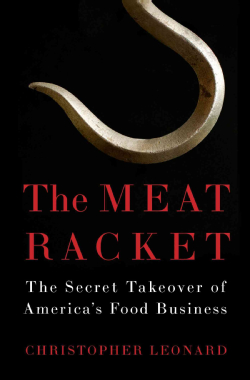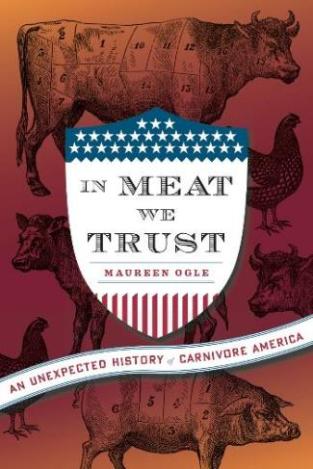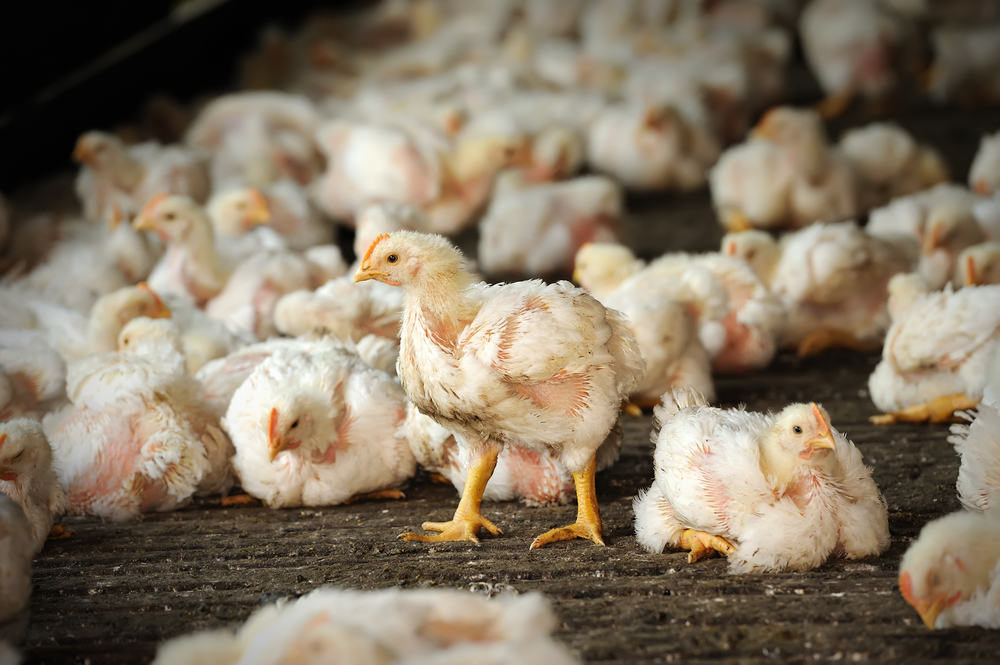For much of its history, the meat company Tyson defined itself as a family farm. Doing so allowed the company to pay workers less than minimum wage, dodge lawsuits, and get creative in its accounting. Farmers were allowed to do cash-basis accounting, which gave Tyson the leeway to claim to the IRS it was losing money year after year. But the company also kept another set of books, for investors, which showed profits. By claiming to be a primitive farming outfit, without the sophistication to keep proper records, it was able to keep $26.5 million out of the government’s hands before 1985, when the company was struggling for dominance.
Farming is actually the one thing that Tyson doesn’t do — as a new book-length investigation details. The company owns chicken breeders, hatcheries, feed companies, veterinary services, and slaughterhouses. The only part of poultry production that Tyson doesn’t own is the farms.
In the 1960s, Tyson tried running its own farms, but that experiment failed. The land was expensive and so were the chicken houses, which rapidly lost value as equipment wore out. And then there was the problem of labor: It was almost impossible to motivate workers to get up in the middle of the night to tinker with broken fans or wade through the stench of shit to pick up dead birds.
 Contract farmers provided the solution to this labor problem. These farmers were highly motivated because they were nominally independent. Often, the farmers had bet their entire family’s savings on the chicken houses. They didn’t mind getting up throughout the night, or laboring 14-hour days, because they were working for themselves.
Contract farmers provided the solution to this labor problem. These farmers were highly motivated because they were nominally independent. Often, the farmers had bet their entire family’s savings on the chicken houses. They didn’t mind getting up throughout the night, or laboring 14-hour days, because they were working for themselves.
Or so they assumed. Christopher Leonard, the former national agribusiness reporter for the Associated Press, makes a strong case that contract farmers are more securely in Tyson’s thrall than paid employees.
Leonard’s book, The Meat Racket: The Secret Takeover of America’s Food Business, is a minor miracle of reporting. Tyson isn’t the sort of company that likes to show reporters around its operations. Its farmers are bound by contract — and cowed by fear of retribution — from showing anyone so much as a pay stub from the company. It’s secretive enough that we’ve known little about how the corporation operates, even though it touches everyone in America — economists have calculated that 5 percent of the average grocery bill goes to Tyson (which, beyond poultry, does a big pork and beef business as well). Leonard managed to penetrate that secrecy, and has painted an intimate picture of the company and the people who made it.
You could argue that the people who really made Tyson are the farmers — people like Jerry Yandell. When the Yandell family bought its farm in Waldron, Ark., Tyson began dropping off chicks to fill the barns and feed to fill the hoppers. A few weeks later, the trucks would reappear to pick up the grown chickens. Yandell’s paycheck depended on how many birds had survived, and how much weight they had gained. Tyson controlled the animals, and the feed, while Yandell controlled the environment. But, Leonard suggests, when anything went wrong, the responsibility fell on Yandell.
He saw how little control he had when the birds began to cluster into feverish mounds and die. He lost that flock, but still had to pay Tyson for the feed, and pay the bank the interest on the mortgage. The next two flocks were sick as well, which meant the Yandells had to declare bankruptcy and watch their possessions get auctioned off.
The beauty of Tyson’s system is that there’s always another farmer eager to grasp at the American dream. Leonard turns to Boonau Phouthavong, a Laotian refugee whose family had managed to save a small nest egg over years of hard work. Boonau bought a farm and spent $60,000 fixing it up. He worked hard and lived with a frugality that most Americans wouldn’t accept. But Boonau also failed as a chicken farmer, because Tyson pays on a curve: The farmers with the chickens that gain the most weight get a bonus, while those with skinnier birds take a hit. Boonau couldn’t compete with neighbors like Nouk and Nue Yang, fellow Laotians, who’d been able to afford a state-of-the-art, $2 million farm (though health insurance was still beyond their means).
Farmers may be the most potent ingredient in Tyson’s formula. They work every day, live in near poverty, and gamble their savings on a chance to move up the American class ladder. It’s the farmers, prodded by Tyson’s competitive fee scheme, who pay for upgrades to chicken houses — well, farmers, along with taxpayers. The U.S. Farm Service Administration backs loans to poultry farmers and pays banks back when they default. In other words, we’re all subsidizing a churning rotation of bankruptcies that keeps companies like Tyson supplied with the newest infrastructure and a desperate labor force.
 American meat eaters live, for the most part, in happy ignorance of the system that grows animals for slaughter. When that ignorance is interrupted with a bit of information about the meat industry, we typically respond with outrage.
American meat eaters live, for the most part, in happy ignorance of the system that grows animals for slaughter. When that ignorance is interrupted with a bit of information about the meat industry, we typically respond with outrage.
This pattern has recurred again and again over the history of the country, shows Maureen Ogle in her book, In Meat We Trust: An Unexpected History of Carnivore America. Urban eaters live too far from the source of our meat to understand production practices, and we’re liable to freak out about the wrong things. For instance: Using lips and tongue in a frankfurter makes perfect sense if you are concerned with taste, texture, and using the whole animal from snout to tail, but it provokes visceral disgust in people who don’t know that’s what they’re eating.
At the same time, because urban meat eaters live far from the farms, we see nothing in a piece of meat but the price, and we reward those businesses who can provide it most cheaply. This has led to true outrages: environmental degradation, Tyson-style exploitation, and the evolution of antibiotic-resistant bacteria. These, Ogle points out, are the tradeoffs we’ve chosen as eaters who overwhelmingly opt for the cheapest meat.
In other words, when our ignorance is interrupted by outrage, sometimes it’s justified, sometimes it’s not — but either way, it’s our own damn fault.
Manure spills, dead hogs, and bacteria-tainted meat highlighted Americans’ contradictory relationships with their food and their values: They wanted cheap, low-fat meat, and they wanted it from a drive-up window, but satisfying those desires carried costs in the form of environmental damage and real threats to health.
Ogle has a point here: We shouldn’t complain about the hidden costs of industrial meat if we’re not prepared to cover those costs at the butcher counter. It’s surprising, then, that Ogle doesn’t give more credit to those who are prepared to pay farmers the true cost of food. She describes these as “exotica enthusiasts,” hipsters, and fetishists — and of course, all those types have been drawn to non-industrial meat. But surely some boutique-meat buyers are motivated by less trendy reasons.
The factory-like meat production system has certainly accomplished amazing things. In 1925, it took 15 weeks to raise a 2.2-pound chicken and cost the equivalent of $22 in today’s dollars. Now, it takes four weeks and costs about $4. That achievement can’t be ignored. In her examination of the poultry industry, Ogle writes, “Critics complained that poultry growers were mere hired hands rather than farmers. But, for better or for worse, that was precisely the goal: To make the farm function like a factory.”
As Leonard has shown, there is one important difference between the factory and the factory farm: U.S. factory workers are fairly well paid. They have healthcare and retirement benefits. They are allowed to take weekends off, and they earn overtime if they work more than eight hours a day. Independent contract farmers don’t have any of these perks. If they did, the price of chicken would go up. I think it’s worth it.



